Besides the natural minor scale, the melodic and harmonic scales can also be used as a fundament for chords progressions. The harmonic minor differs from the natural minor with a raised seventh; the melodic minor differs from the natural minor with raised sixth and seventh. Still, the majority of songs written in minor keys use the natural minor. The key of G Minor has a key signature of 2 flats (B♭, and E♭).
It is the 5th most popular key among Minor keys and the 12th most popular among all keys. Minor keys, along with major keys, are a common choice for popular music. The three most important chords, built off the 1st, 4th and 5th scale degrees are all minor chords . This step shows how to identify the notes and the name of a triad chord whose root note is the 7th scale degree of the G natural minor scale. This step shows how to identify the notes and the name of a triad chord whose root note is the 6th scale degree of the G natural minor scale. This step shows how to identify the notes and the name of a triad chord whose root note is the 5th scale degree of the G natural minor scale.
This step shows how to identify the notes and the name of a triad chord whose root note is the 4th scale degree of the G natural minor scale. This step shows how to identify the notes and the name of a triad chord whose root note is the 3rd scale degree of the G natural minor scale. This step shows how to identify the notes and the name of a triad chord whose root note is the 2nd scale degree of the G natural minor scale. This step shows how to identify the notes and the name of a triad chord whose root note is the 1st scale degree of the G natural minor scale. Time for some more playing, using Heal the World you can learn C major chord , D minor chord , and E minor chord . These are the first three chords of the C major scale.
The Skoove app will listen and wait for you so take your time to appreciate the different sounds of the major and minor chords. Diminished keyboard chords are less common than major and minor chords, but are still frequently used in rock and pop songs. The most common use of a diminished chord is to transition between two other, more stable-sounding chords.
You can hear a diminished chord used in this way in the song "God Only Knows" by The Beach Boys. To identify the triad chord note names, use the 1st, 3rd, and 5th columns / scale degrees, which are notes F, A, and C. To identify the triad chord note names, use the 1st, 3rd, and 5th columns / scale degrees, which are notes Eb, G, and Bb.
To identify the triad chord note names, use the 1st, 3rd, and 5th columns / scale degrees, which are notes D, F, and A. To identify the triad chord note names, use the 1st, 3rd, and 5th columns / scale degrees, which are notes C, Eb, and G. To identify the triad chord note names, use the 1st, 3rd, and 5th columns / scale degrees, which are notes Bb, D, and F. To identify the triad chord note names, use the 1st, 3rd, and 5th columns / scale degrees, which are notes A, C, and Eb.
To identify the triad chord note names, use the 1st, 3rd, and 5th columns / scale degrees, which are notes G, Bb, and D. As we briefly learned previously, we can play major and minor chords in any order as long as the notes remain the same. Inversions are very handy tools that will help add weight, drama, and color to your chord playing. Minor chords, like major chords, contain three basic keyboard notes, a root note, third, and fifth. To play a minor chord, select any root note, then count three half-steps up to the third.
From the third, count two whole-steps to find the fifth. Your practice sessions, after you've learned your chord shapes and how to play them, are made up of chord progressons. The songs you hear are made up of chord progressions. When you look up the chords to a song, you're looking for that song's chord progressions. The chord progressions should include the notes of the song's melody and harmony as they move along, but they also have to sound good all by themselves. And if you want to know more about chord progressions, read the article series.
As you see, the 3rd, 6th, and 7th notes in the minor scale are "flatted" respect to the major scale. The chords symbols just refer to this fact, warning us that their root notes are lower than what we would expect from a major scale. In other words, with the symbol III we would indicate an E major chord, so we need to specify the flat in front of it as bIII to indicate the Eb chord. This step shows how to identify the notes and the name of a 7th chord whose root note is the 7th scale degree of the G natural minor scale.
This step shows how to identify the notes and the name of a 7th chord whose root note is the 6th scale degree of the G natural minor scale. This step shows how to identify the notes and the name of a 7th chord whose root note is the 5th scale degree of the G natural minor scale. This step shows how to identify the notes and the name of a 7th chord whose root note is the 4th scale degree of the G natural minor scale. This step shows how to identify the notes and the name of a 7th chord whose root note is the 3rd scale degree of the G natural minor scale.
This step shows how to identify the notes and the name of a 7th chord whose root note is the 2nd scale degree of the G natural minor scale. This step shows how to identify the notes and the name of a 7th chord whose root note is the 1st scale degree of the G natural minor scale. I recommend to sit down at the piano and to play one of the chord progressions I mentioned above. If you're a singer, you can start to sing notes over the chords.
The fun part here is that you can start to figure out the notes you're singing by playing them on the piano with your right hand. Usually, it's songs with major keys that borrow chords from their parallel minor keys. Simplest gm chord for beginner guitar players The g#m7 chord is produced by playing the 1st , flat 3rd, 5th and flat 7th of the g sharp major scale. The intervals composing the gm9 chord are root, minor third, perfect fifth, minor seventh, and major ninth. Three of the keys share notes with three other keys, they are called enharmonic.
They may look the same on a guitar or piano, but look very different in sheet music. C♭ Major and B Major are enharmonic, C♯ Major and D♭ Major are enharmonic, and F♯ Major and G♭ Major are enharmonic, sharing notes on a guitar. C Major is the best key to study the patterns of chords, as there are no extra sharps and flats to contend with, counting out notes in the scale is easier. It is nice to have all fifteen keys for reference, but in practical use a guitarist may only play a few of these keys. Guitar is easier to play when at least some of the open strings are in the key. When you add a minor seventh to a major chord you get a seventh chord; in this case we have added F to make G7.
Chords In The Key Of G We used figure 2 as a starting point, but it works with figure 1 as well. G7 is chord V in C, so try playing a C major chord after G7 and you'll hear chord V resolving to chord I. This works because the tension between the notes B and F in the G7 chord is resolved when they arrive on C and E. The context in which the harmonic minor scale most often appears in solos, riffs or arrangements is when a V7 chord resolves in a minor chord. This resolution is typical of the harmonic minor context, as it does not exist in the natural major key or the natural minor.
Notice there is only one 13th chord in a key, with seven different names depending on the root of the chord when played. Also notice that when you add a 6th note to a triad, the new chord has the same notes as another triad with an added 7th, Gadd6 has the same notes as Em7. When playing in a Major Key, notes outside of the key may be added, creating chords not shown above. When a note outside of the Key is added to a chord, the note is considered an accidental note and would need to be marked in the name of the chord. This means that starting from each root note, we'll count out the 1st 3rd and 5th degrees along the major scale of that given root note. These are the root, major third and perfect fifth, steps one, three and five of a G major scale.
The way that G major fits on the guitar makes it easy to flavour the basic chord with interesting notes like sixths, sevenths and ninths. Chords III, V, VI and VII are major chords and chord ii° is a diminished chord. To identify the 7th chord note names, use the 1st, 3rd, 5th and 7th columns / scale degrees, which are notes F, A, C, and Eb. To identify the 7th chord note names, use the 1st, 3rd, 5th and 7th columns / scale degrees, which are notes Eb, G, Bb, and D. To identify the 7th chord note names, use the 1st, 3rd, 5th and 7th columns / scale degrees, which are notes D, F, A, and C.
To identify the 7th chord note names, use the 1st, 3rd, 5th and 7th columns / scale degrees, which are notes C, Eb, G, and Bb. To identify the 7th chord note names, use the 1st, 3rd, 5th and 7th columns / scale degrees, which are notes Bb, D, F, and A. To identify the 7th chord note names, use the 1st, 3rd, 5th and 7th columns / scale degrees, which are notes A, C, Eb, and G. To identify the 7th chord note names, use the 1st, 3rd, 5th and 7th columns / scale degrees, which are notes G, Bb, D, and F. At School of Rock, our students are able to learn theory, apply what they learn to their instrument, rehearse with a band, and then get on stage and perform a rock concert!
The g flat minor guitar chord adds depth to songs written in the e, a, and d major keys, and it is enharmonic with the f#m chord. The notes in the g minor ninth chord are g, bb, d, f, and a. There is usually more than one place on a guitar where a chord can be played.
To figure out places to play a chord, write the notes of the chord down in a text file and then visit the Major Key position charts on guitar. Find the notes on the chart and think of how to play all three notes. You do not have to play all six strings to play a chord.
Just remember that a sharp (♯) is one fret up from a note, a flat (♭) is one fret down. On the sixth string of a guitar, the F is on the first fret. To decide the name the chord quality, each step below will use note intervals to calculate how many half-tones / semitones / piano keys between the root and the 3rd .
With 12 notes in a chord, chord tones more than five semitones away can often be accessed with a smaller leap by going down in the scale from the root. That means the pianist's hand is less stretched when playing a chord progression. Starting from the root, triad chords contain 2 additional chord tones. The number of semitones between each note varies if the chord is Major or Minor. In G Minor, the middle note is 4 semitones above the root.
We call this note the 'third' because it is three whole notes from the root, G. On a piano, a semi-tone step is simply a key up or down from the current key. So, we can count four keys up from G to reach the third – B♭.
Practicing piano chords will develop technique as well as chord recognition. Major and minor chords are the foundation of harmony in Western music. They are the two basic flavors and feelings from which all other chords emerge. It's an incredibly popular chord progression in rock music. It's used in Stairway to Heaven during the solo, and too many other songs to name. It typically goes like this…Am-G-F-G-Am, and repeats.
It's a great progression to solo over, using a minor pentatonic or natural minor scale. In this article I'll answer the question of which chords sound good together in a few "guitar-friendly keys." I grouped them in bunches of three or four chords. I also give you popular chord progressions that these chords can be used to play with. I am a songwriter and compose my own music to go with my lyrics. Most of my chord progressions follow common patterns like using a I V IV or I IV V with an occasional ii or iii or vi chord thrown in for good measure. But I am always looking for new ways to make my chord progressions more interesting and unusual.
So when I see something outside the norm that sounds good, I like to try to figure out what makes it work. A minor scale differs slightly from a major scale in that degrees 3, 6 and 7 are all flattened, so they are lowered by one semitone. Learning the different types of chords and how to play them on the piano is a lot of fun, and opens up doors to understanding and playing all types of music. As you learn more songs, and even write your own, you'll find endless combinations of piano or keyboard chords that create different sounds and moods. The diminished triad uses a minor third, and a lowered fifth, called a "diminished fifth." A diminished fifth is three whole-steps, or six half-steps, above the root note. To find the notes of a diminished chord, count a step-and-a-half from the root to the third, and then a step-and-a-half from the third to the fifth.
Minor chords are also very common in rock and pop music. "Comfortably Numb" is an example of a rock song that begins with a minor chord. Most rock and pop songs use a mixture of major and minor piano chords. The intervals in a major chord are called a "major third," the distance from the root note to the third, and a "perfect fifth," the distance from the root to the fifth.
We counted the steps from the root to the third and the third to the fifth. To find the interval of a perfect fifth above the root note, count three-and-a-half steps, or a total of seven half-steps. The below diagrams show you how to play the g minor 7 chord in various positions on the fretboard with suggested finger positions. A g flat minor chord is the same thing as an f sharp minor chord (f#m). A gm guitar chord is usually played as a barre chord, and, as is the case with most chords, there are several different ways of playing a g minor chord on guitar. The G minor chord is a very popular chord on the guitar.
The chord actually contains two notes that can be played on open strings , which means that you can technically play the Gm chord as an open chord . However, the open version of Gm is somewhat awkward, and almost never used. Instead, Playing Gm as a bar chord on the 3rdfret, is a much more common way of playing the chord. I ii III+ IV V VI° VII° Gm Am Bbaug C D Edim F#dim To notice is that the composition of chords now includes one augmented chord and two diminished chords. These chord groups are less convenient to creating chord progressions this will lessen the potential for the Melodic minor in this area. Looking at the Triad chord table, the name of the triad chord quality having major and perfect note intervals is major.
Looking at the Triad chord table, the name of the triad chord quality having minor and diminished note intervals is diminished. Looking at the Triad chord table, the name of the triad chord quality having minor and perfect note intervals is minor. To identify the triad chord quality that has these notes, begin by counting the number of half-tones / semitones between the root and each of the notes. This step shows the scale note names that will be used to construct all triad chords that harmonize with those scale notes.
As in the major keys, the fifth chord— D minor in this case— can also be played as a seventh chord— in this case Dm7. Because it sits at fifth place, it has the honour of being the chord announcing the ending of the chord progression, and is generally followed by the root chord . The basic G minor chord can be a bar chord using the forefinger across all strings at the third fret and two fingers holding down the fourth and fifth strings at the fifth fret.
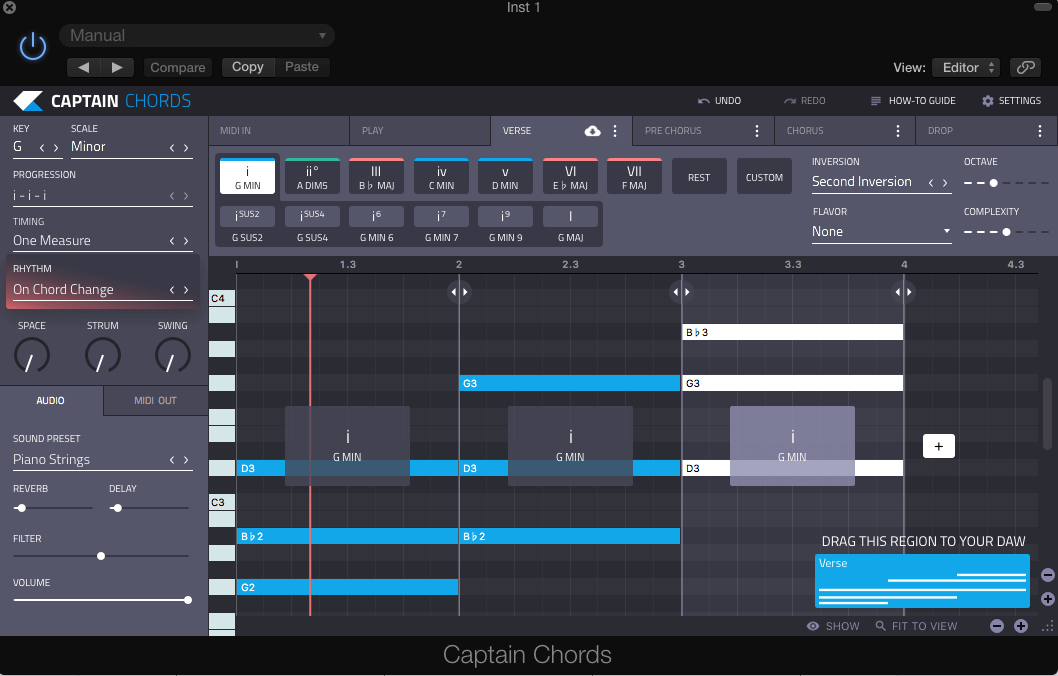





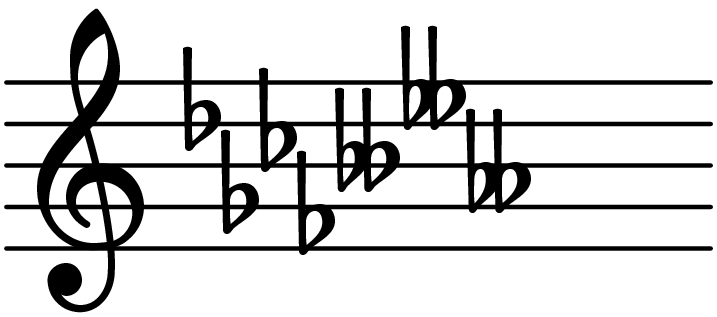

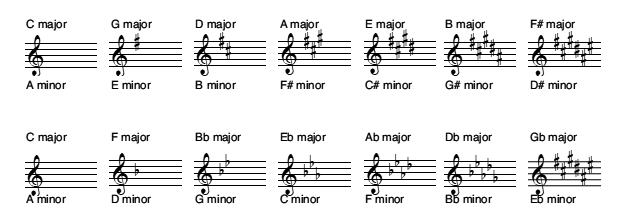


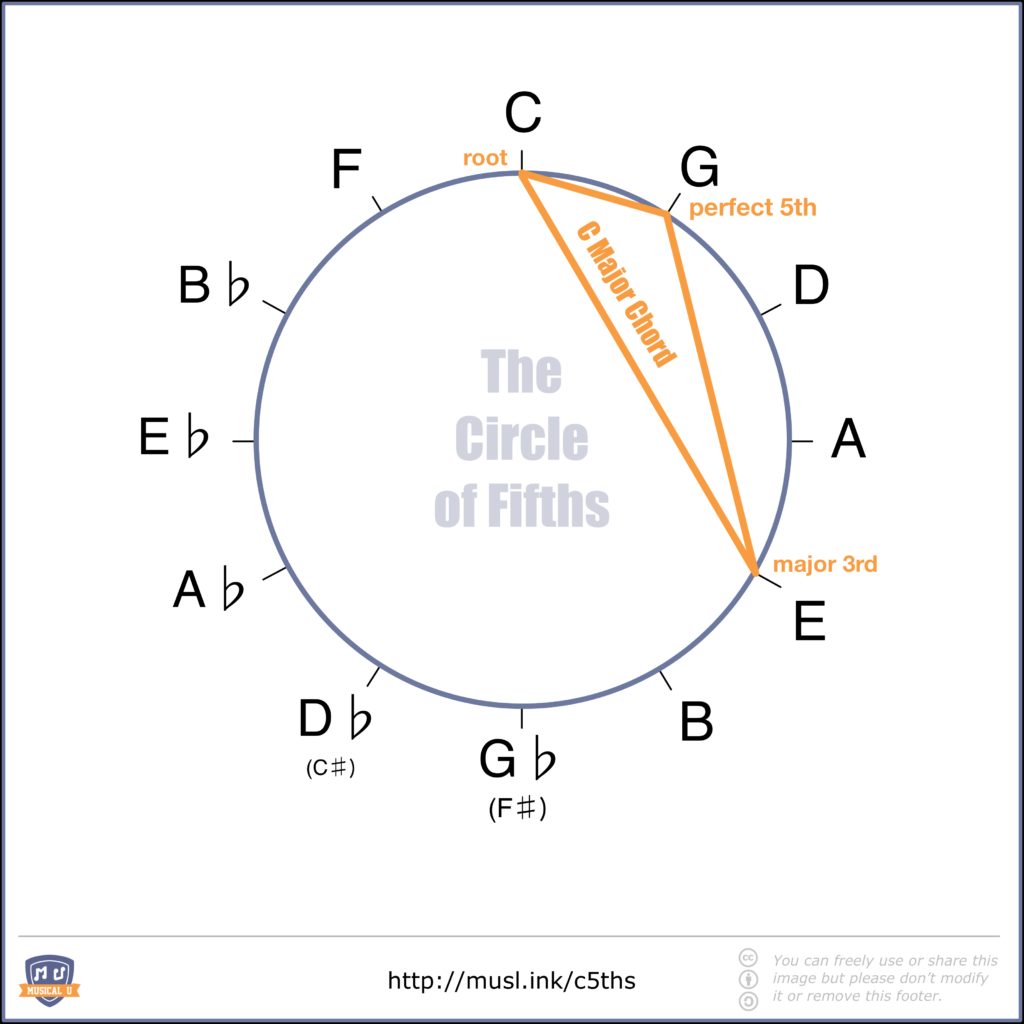








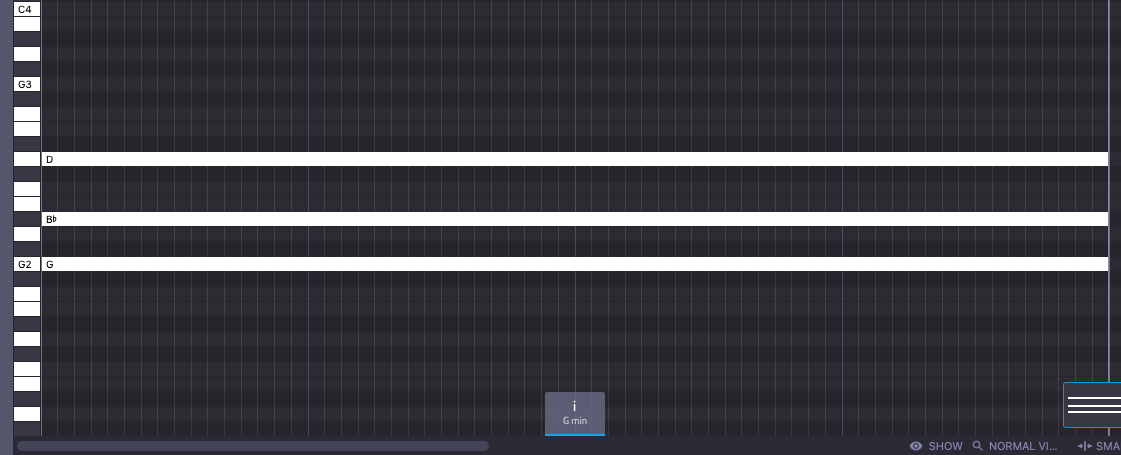


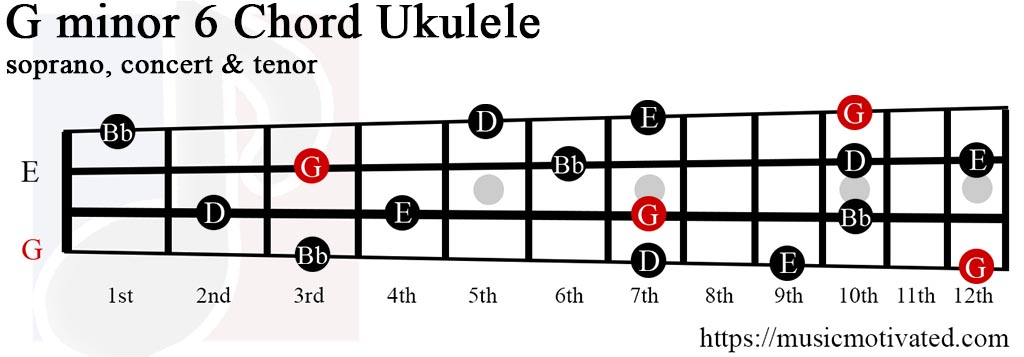



No comments:
Post a Comment
Note: Only a member of this blog may post a comment.